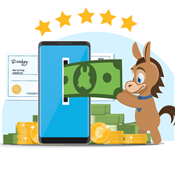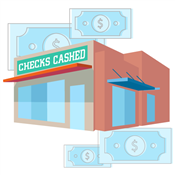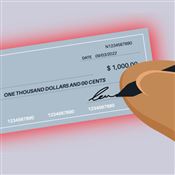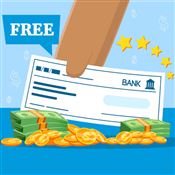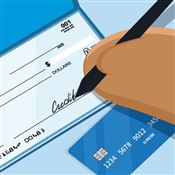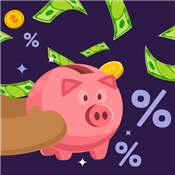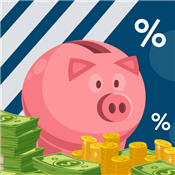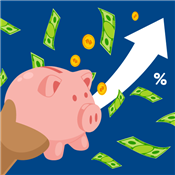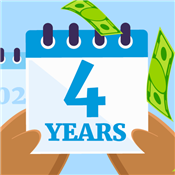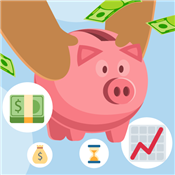Can You Deposit a Ripped Check?
You may be able to cash a ripped check, but some info needs to be visible for a check to be considered valid. Find out more in this guide.
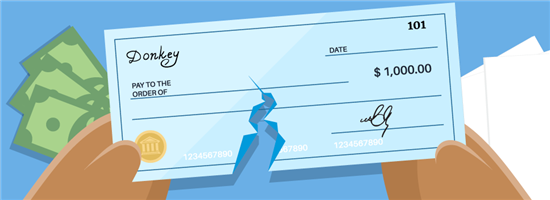 |
Curious about what to do with a ripped check?
You've come to the right place.
In this article, find out how to handle a damaged check and the best ways to cash it. Plus, learn what to do if your check is too damaged to cash.
Can You Deposit a Ripped Check?
In most cases, you will be able to cash a ripped or damaged check. However, it ultimately comes down to your bank and the condition of the check.
If the routing number and account number aren't legible, the check likely cannot be cashed. Plus, some banks have a policy against processing a torn check digitally.
Be sure to ask your bank about their policies before heading into a branch to cash it.
What Information Needs to Be Visible on a Check?
In order for a check to be considered valid, the following information must be legible:
- Routing number and account number located along what is called the MICR line along the bottom of the check
- Payer name printed on the top left of the front of the check
- Payer signature on the bottom right of the front of the check, next to where it says "MP"
- Payee name written or typed on the line called "Pay to the Order Of"
- Check number on the top right of the front of the check
- The dollar amount in numeric format (e.g. "$100.00") next to the "$" symbol midway up the right-hand side of the front of the check
- The dollar amount in text format (e.g. "One hundred dollars & 00/100") on the line below your name
- The date entered next to the check number (you can also "post-date" checks if you do not want them to be cashed until a certain future date)
- Your signature on the back of the check on the line labeled "Endorse Check Here"
How to Determine the Condition of the Check
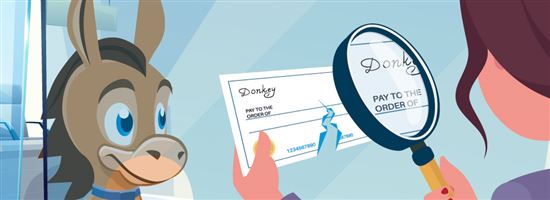 |
In order to cash a ripped check, you'll need to assess the damage first. Here's what qualifies as mild, moderate, and severe damage to your check:
Mild Damage: One or a few small tears less than an inch in length that has not caused significant damage to the check (for example, no pieces of the check are missing and all information is clearly legible).
You should easily be able to cash a slightly damaged check either in-person or online.
Moderate Damage: A defect that is more severe but can be easily repaired. For example, a check that has been bent in half so many times that it creates a perforation and rips in half.
Moderately damaged checks are a fringe case. You may be able to cash a check with this level of damage and you may not. It will depend on the particular bank teller or the bank's technology.
Severe Damage: This is damage that's essentially beyond repair. This might be a check that has been shredding, burned, or has had liquids spilled on it so the ink has started to run.
It's highly unlikely that you'll be able to cash a check that has severe damage, because:
- The check will appear as if someone purposely tried to destroy it (such as shredding)
- Necessary information — such as the routing number or dollar amount — will be missing or illegible
Best Ways to Cash a Ripped Check
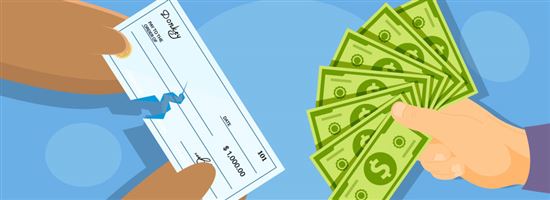 |
Below are the three best ways to cash a ripped check. Review the options below to discover which option is best for your situation.
- Bank Teller
It may be helpful to speak to a bank teller in-person to explain your situation and verify your identity.Plus, a human bank teller may be able to read slightly damaged information that an AI cannot (think about those "I'm not a robot" security tests found on websites with wobbly letters and numbers).
- ATM Deposit
Automated teller machines (ATM) deposits are a mid-way point between speaking to an in-person bank teller and mobile deposits.When you deposit a check at an ATM, there is roughly a 50/50 chance that the check will be manually processed the following day or handled by AI using a process called Remote Data Capture (RDC).
Depositing a ripped check at an ATM may be possible if a human teller denied your request, but bear in mind that many financial institutions still process these checks manually and simply use ATMs as a delivery system to reduce waiting in line inside the branch.
- Mobile Deposit
If you do not want any human involvement in your check deposit process, your best bet is to use mobile deposit using your bank or financial service provider's mobile app.You will be prompted to sign the back of the check, enter the exact amount of the check you wish to deposit, and take a photo of the front and back of the check using your smartphone camera.
This process is fully automated and you should be able to cash a ripped check as long as all the required information is visible and legible. Note that this process will not work if the tear in the check renders any of the information difficult to scan.
Typically, you should be able to access your money on the same day, but you may have to wait up to 5-7 business days depending on the dollar amount and type of check you are cashing.
For example, a handwritten personal check in excess of $10,000 will take much longer than a printed payroll check for a few hundred dollars.
What to Do if You Can't Cash Your Ripped Check
If you can't cash a ripped check using any of the methods above, it's not the end of the world.
You can still get your money by requesting a new check from whomever wrote you the check in the first place, whether that is your employer, the government, or a family member.
Explain to them that you were not able to cash the check due to damage and request a new one. They may be able to verify this information by checking their bank records, but be prepared to offer some sort of proof just in case.
How to Identify a Fraudulent Check
The information in this article can also help to make sure that you are not cashing a bad check. Cashing a bad check will cost you money in the form of returned check fees, which are typically between $20 and $40 per transaction.
For example, Bank of America has an NSF returned item fee of $35 per transaction over $1.[1]
Here's how to make sure your check is legit:
- The check includes all information listed above in the correct locations
- The check contains all identifying information — and logo — for the issuing bank
- The check contains at least one perforated edge (fraudulent checks are often printed individually instead of torn from a legit checkbook)
- The check number at the top right of the check should match the check number at the end of the MICR line
- The routing number does not match the issuing bank name (you can check this information here)
The Bottom Line
In many cases, you will still be able to cash a check even if it has rips, tears, or minor damage. However, if important information, such as routing numbers or bank information, is missing or illegible, you will need to request a new check.
References
- ^ "Personal Schedule of Fees": Bank of America, 2022.
Write to Justin Barnard at feedback@creditdonkey.com. Follow us on Twitter and Facebook for our latest posts.
|
|
| ||||||
|
|
|
